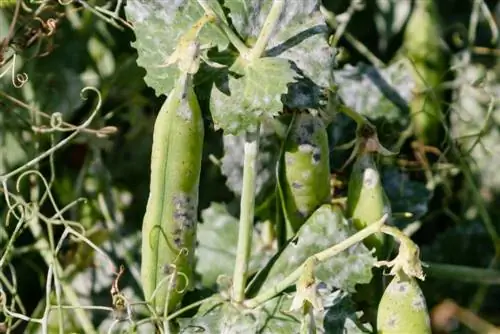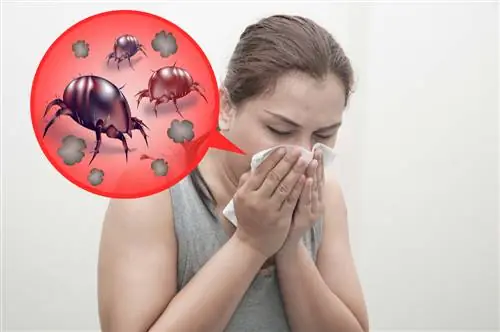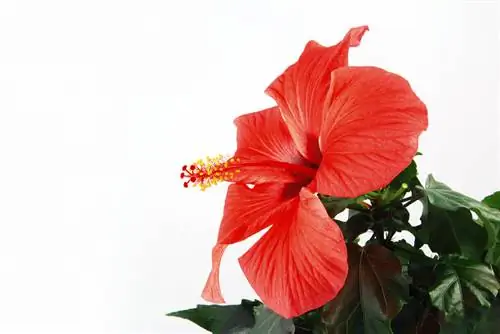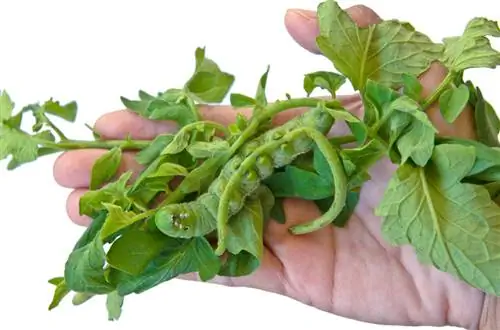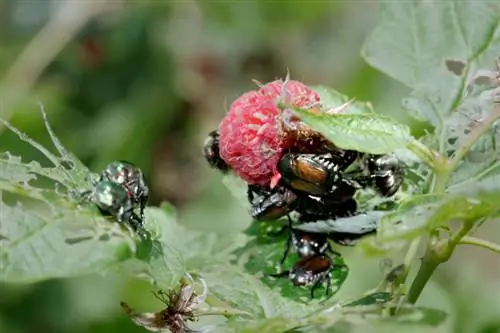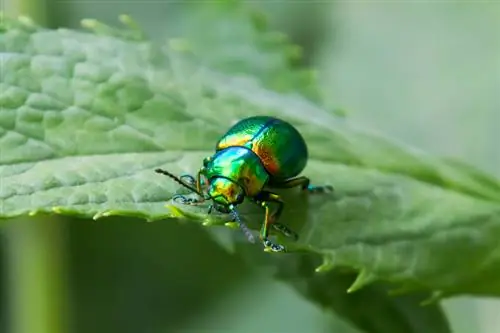- Author admin [email protected].
- Public 2023-12-16 16:46.
- Last modified 2025-01-23 11:19.
Conscientious care creates resistant pea plants. However, they are not completely immune to diseases and pests. Fungi, viruses and insects lurk throughout the season. A whole arsenal of biological control agents is available to troubled hobby gardeners.
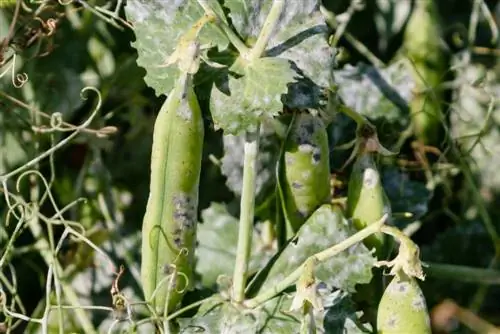
How to control pests and diseases on pea plants?
To prevent pests and diseases on pea plants, you should plant resistant varieties, use natural control agents such as milk solutions against powdery mildew, cultural protection nets against pea moths and natural predators against pea beetles, and work the soil thoroughly.
Stop fungal infections in good time
The most feared fungal disease in the home garden is powdery mildew. The fungal spores strike, especially in nice, warm weather. The damage is unmistakable:
- whitish coating on the leaves
- brown discolored pods
- stunted growth
Since a chemical fungicide has no place on food plants, we recommend daily spraying with a milk solution. To do this, mix 1 part fresh milk with 1 part water. The lecithin in the milk permanently kills the spores.
Face pests with natural remedies
The army of pests that target peas is led by the pea beetle. The 4 to 5 millimeter small, brownish beetle causes considerable damage to crops.
- the larvae settle in the grains
- Hulls and peas have numerous holes
- infected vegetables are unsuitable for consumption
To stop the pea beetle from spreading further, place the affected plants in the freezer for a few days. The peas are then disposed of in household waste - not in the compost.
Effectively dispel pea moths
The 8 millimeter small pea moth is an unsightly type of butterfly. The females lay their eggs on the flowers in May and June. The hatched larvae eat their way through the pod and nibble on the seeds.
- preferably plant early pea varieties
- spread close-meshed cultural protection nets (€10.00 on Amazon)
- Setting up sticky traps for the nocturnal butterflies
- Use natural predators, such as parasitic wasps and predatory mites in the greenhouse or ground beetles and ladybirds in the bed
The larvae descend to the ground after 3 weeks of their nefarious activity. There they overwinter in the ground. Repeated, deep tillage will sustainably prevent an infestation in the next season.
Tips & Tricks
Hoards of beneficial insects settle in a natural garden. Create retreat areas such as hedges, dry stone walls, piles of leaves and rotten tree trunks. Hedgehogs, birds, lacewings, ladybirds and other helpful animals are available to you free of charge in the fight against pests.

